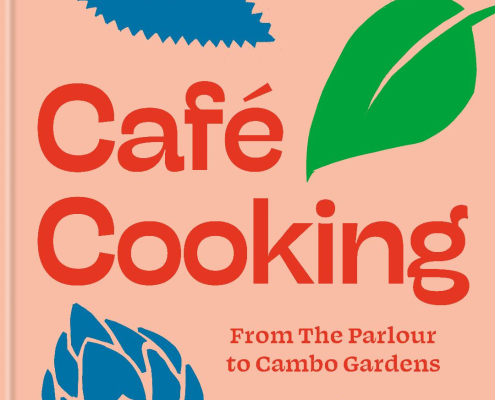Kitchen Press is a new, independent publisher specialising in food writing. It aims, through lovingly crafted bespoke cookbooks, to connect innovative chefs, expert food writers and independent restauranteurs with customers and others around the world who love food.
We believe that the whole experience of reading about food and cooking should be as pleasurable and inspiring as eating it, and we want to help promote the people and places doing that best.


La-Mian: A Noodle Story
Lamian dough – heftier to work than it looks.
It’s been incredibly exciting seeing the recipes coming in from traders for the Greenwich Market Cookbook, everything from Arapina‘s wonderful Greek biscuits and pastries, delicate & fragrant & redolent with her family’s history in Asia Minor, to Pig Dogs & Brisket’s deep and dirty southern-style mac & cheese. But as well as being an inspiration, the global nature of the market has also brought along some difficulties.The La-Mian and Dim Sum stall is a quiet legend in street food circles – they used to work from Brick Lane but are now permanent fixtures in Greenwich – and from the moment the project started, I knew we had to get them on board. Lui Zhongyi and his wife Kelly make a wonderful array of food, but they are most famous for the hand-pulled noodles which Zhongyi pulls and stretches with a theatrical zeal quite at odds with his serious persona. Of course, he’s not really dour at all – he just isn’t so comfortable with the English language and as it was his culinary secrets we were after for the book, this was a problem. Enter the amazing Jessie Levene! Jessie is a polyglot, and a greedy one at that (I mean that as a compliment). Having spent 3 years in China, writing a column on regional foods and blogging about her experiences, she not only speaks great Mandarin but also has a real wealth of knowledge about the context of different Chinese dishes. So, thanks to Jessie we will have some of Zhongyi & Kelly’s domestic recipes in the book, but in the meantime she has also very generously given us some background about la-mian in general and some of her wonderful photos of noodle pullers in action in China. Here they is, because the second best thing to eating la-mian is reading about them:
La-mian (literally translated into English as ‘Pulled Noodles’) are a truly visual eating experience – fresh wheat dough pulled by hand into long, even strands, served in a plain beef broth. Perhaps this doesn’t sound all that special, but it must be seen to be believed, and in China, La-mian are usually made within eyesight of the diners. Through a magical and mind-boggling process of twisting, folding, pulling and loud slapping of the dough onto the work-board, the chef creates perfect noodles from raw dough in mere minutes. He or she also makes it look ridiculously easy, which it certainly is not.
La-mian comes from the city of Lanzhou, the capital of Gansu Province, in China’s north west region. Lanzhou is on the borderlands of Han China, meaning that it’s population is a lot more ethnically diverse than in the major cities on the east coast. One of the largest ethnic groups here is the Hui Muslim minority, and it is most often Hui chefs who one can find making La-mian across China. La-mian restaurants in China are usually pretty basic affairs, but are often open later than many other eating places, making them particularly convenient for a midnight snack. They’re also amongst the few restaurants in China where pork is not on the menu – Hui Muslims keep halal, and choice of meat at La-mian joints is usually only beef, chicken or lamb.
La-mian itself is a cheap, filling and delicious meal. The finished dish itself isn’t that much of a looker – just plain white noodles in a clear soup, topped with sliced cooked beef and fresh coriander. But it’s the visual spectacle of the making of the noodles, right in front of you, which makes La-mian so special.
Man pulls noodles!
Check out Jessie’s blog recounting her adventures around the world at http://jessielevene.com/.
Digital Soup
We’ve grappled with digitising our books before but have always shied away from it for two reasons – firstly, from an old-fashioned love of having print cookbooks to get dirty in the kitchen, and secondly (and more importantly) because of the design limitations of epub formats – especially for hand illustrated projects. We needed to get our heads around it though, and the publication of Fraser’s Seasonal Soups last year was a good opportunity to start thinking how we’d like an eBook to look and feel. Thanks to the talents of Stuart Cockburn at I Love Grids, we now have a version that captures the hand-drawn feel of the print book while having the convenience and functionality of an eBook.
Fraser’s Seasonal Soups by Fraser Reid is available for kindle on Amazon right here, and will be on sale in our own shop and on other platforms very soon. Please do take a look and let us know what you think, and what you prefer to cook from – print or digital? Print cookbooks, more than any other genre of books, have held their own in the digital revolution, but as more and more people use the internet to find things to cook, the notion of using your kindle or iPad or laptop in the kitchen is becoming the norm. And anything that gets people cooking is ok by us.
To whet your appetite and in recognition of the fact that soup is not just for the winter months, here’s a seasonal March recipe for you from the soup genius himself.
Smoky Sweet Potato & Butter Bean
Serves 4
Hands down this is one of my favourite soup recipes and it always goes down well with customers. The creamy butter beans are the perfect balance for the smoky paprika and sweetness of the potatoes.
Heat a pot on a medium heat and add the oil or butter. Fry the onion and garlic for 5–10 minutes until they soften slightly.
Add the sweet potato, carrots, drained butter beans and smoked paprika to the pot, mixing everything together.
Pour in 1.2 litres of boiling water, crumble in the stock cubes, and then bring it all to the boil. Turn down the heat and simmer for 20 minutes.
Blend the soup and season to taste.
Buy Fraser’s Seasonal Soups by Fraser Reid print edition here or as a kindle book here.
Gateau de Sirop for International Restaurant Day
It’s International Restaurant Day tomorrow – a great idea from Finland encouraging people to set up restaurants for a day, anywhere, for fun. The idea of the day, according to the website, is “to have fun, share new food experiences and enjoy our common living environments together.” Since it started up in 2011, it’s grown from 45 restaurants in 13 cities in Finland to a whopping 2017 restaurants popping up, just for the day, in 30 countries around the world. Amazing! In a moment of crazed enthusiasm on Tuesday, me and my 9-year-old daughter decided to get involved and serve Gumbo from the communal barbecue in the park in front of our house. I’m now looking out of the window at a full-blown Scottish November storm, wondering when I mistook Dundee for Louisiana…
Despite inclement weather conditions, for 2 hours only, Special O’Cajun (geddit? Puns courtesy of Stanley, age 11 – yeah, don’t blame me ok?) will be serving up Chicken & Sausage Gumbo, Baked Beans and Gateaux de Sirop from the shelter of the Magdalen Green cherry trees. They’re all recipes from Sarah Savoy’s beautiful book, The Savoy Kitchen – A Family History of Cajun Food which we were very proud to publish last year. Of all of them, it’s the Gateaux de Sirop that I love the most: a dark, moist spiced cake that smells to me of childhood and takes me back to the sticky gingerbreads my mum used to bake, and her mum before her.
Where my mum would have used treacle and golden syrup, the ‘sirop’ in this recipe should really be dark cane syrup. Sarah says: “This is a very old-fashioned recipe that Cajun ladies used to make to bring to their friends when visiting. My dad used to grow sugar cane and cut and peel pieces of the cane for us to chew on as an afternoon snack. When he was younger, one of his favourite treats was getting to sample the ‘cane beer’ made during the process of making the cane syrup. As the cane boiled, the foam and chuff that rose to the top was removed to a pot beside the fire. In the heat the sugar would ferment and that would be used to make the beer. I’m gonna get around to trying that some day.”
Here’s Sarah’s recipe, just in case you can’t swing by our restaurant tomorrow. Happy International Restaurant Day everybody x
Gateau de Sirop
Serves 10
Preheat the oven to 180°C (350°F). Grease and flour your cake tin, then line it with greaseproof paper.
Mix the brown sugar, oil, and cane syrup or treacle in a large bowl. Put the vinegar and bicarbonate of soda in a cup with 250ml (1 cup) of very hot, but not boiling, water then pour it into the syrup mixture. Add the cinnamon, vanilla, ginger, cocoa powder and lemon zest and stir until combined. Beat in the eggs, one by one, then gradually fold in the flour, then the raisins, and then the nuts.
Pour the batter into the prepared cake tin and bake it for about 50–60 minutes or until a toothpick inserted into the middle comes out clean.
Serves 10
N.B. Sometimes, instead of mixing the pecans into the butter, I like to candy them in butter, sugar and cinnamon, then chop them roughly and sprinkle over the baked cake.
Buy The Savoy Kitchen – A Family History of Cajun Food by Sarah Savoy here.